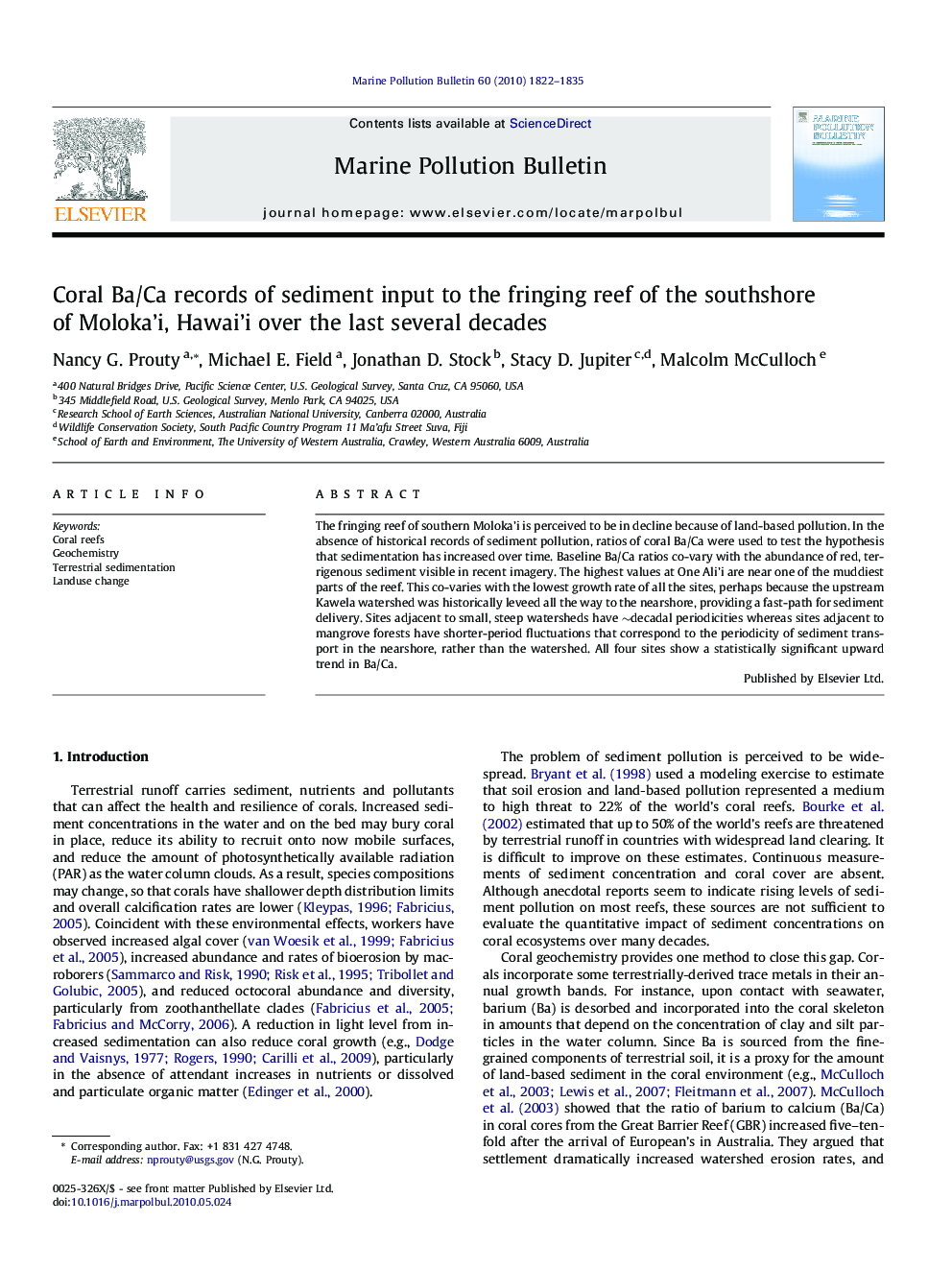| Article ID | Journal | Published Year | Pages | File Type |
|---|---|---|---|---|
| 6362430 | Marine Pollution Bulletin | 2010 | 14 Pages |
The fringing reef of southern Moloka'i is perceived to be in decline because of land-based pollution. In the absence of historical records of sediment pollution, ratios of coral Ba/Ca were used to test the hypothesis that sedimentation has increased over time. Baseline Ba/Ca ratios co-vary with the abundance of red, terrigenous sediment visible in recent imagery. The highest values at One Ali'i are near one of the muddiest parts of the reef. This co-varies with the lowest growth rate of all the sites, perhaps because the upstream Kawela watershed was historically leveed all the way to the nearshore, providing a fast-path for sediment delivery. Sites adjacent to small, steep watersheds have â¼decadal periodicities whereas sites adjacent to mangrove forests have shorter-period fluctuations that correspond to the periodicity of sediment transport in the nearshore, rather than the watershed. All four sites show a statistically significant upward trend in Ba/Ca.
